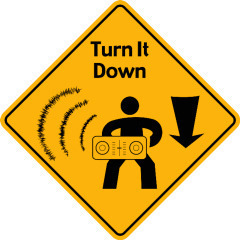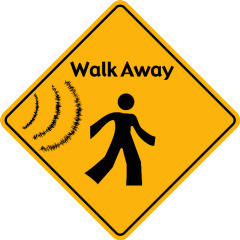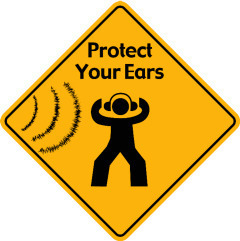Developed by Dangerous Decibels
Students create a wheel that will show them various sound sources, the decibels produced by that sound, and allowable time they can be exposed to that level of sound.
Science Topics
Sound
Decibels
Sense of Hearing
Process Skills
Observing
Measuring
Comparing
Health Skills
Grade Level
3-12
Preparation
15 minutes
Activity
30 Minutes
Clean-Up
5 minutes
Materials not in Kit
Scissors (1 per group)
Glue or tape (1 per group)
Thumb tacks or brads (1 per person)
Introduce the Activity
Let the students speculate. Do not encourage a single correct answer. Do not offer answers to any questions. The answers provided are primarily for the teacher’s benefit.
Ask the students the following questions in bold. Possible student answers are shown in italics
What is a decibel?
A decibel is a measurement of sound.
Is sound dangerous?
yes, sounds can damage the inner ear hair cells if it is too loud for too long. If too many hair cells are damaged and lost, hearing loss can be the result.
Doing the Activity
- Make the “How loud Wheel” as follows:
- Cutting on the dashed lines only, use scissors to cut out the circle of Piece “1”
- Piece “1” – Cut out the box under the word “Sound”
- Piece “1” – Cut three sides of the box under “How many decibels?” leaving the top as a flap to serve as a window shade for the information below.
- Cutting on the dashed lines only, use scissors to cut out the circle of Piece “2”
- Put the two circles together with “1” on top of “2”. Join the black dots in the middle of each circle with a thumb tack or brad. If using a thumb tack, tack the “How Loud is Too Loud Wheel” to a bulletin board.
- Keep the top circle in place so you can read the words on it – hold it still with your hand.
While holding circle “1”, turn circle ”2” until a picture can be seen through the “Sound” window. Directly across from it, you can see how many decibels are produced, on average, by the sound source. It also tells you how long you can listen to it before damage can occur. Anytime at or above this amount has the potential of damaging your hearing.
Discussion
Ask for student observations. There is no correct answer. Let students guide the discussion and present their hypotheses before discussing explanations.
How can you protect your ears from noise-induced hearing loss?
The Answer – There are several ways a person can take to prevent noise-induced hearing loss. Following are the three major ways to obtain hearing protection.



Explanation
Noise is defined as “unwanted sound” and it is America’s most widespread nuisance. It is not a new problem. In the first century BC, Caesar banned chariots in Rome to cut down the deafening sound of chariot wheels on stone roads. Throughout the ages people have complained that they can’t “hear themselves think” due to loud sounds. In America, some people talk of “moving to the country” to get away from the noise of the city.
Loud sound presents a real danger to people’s hearing and general health. In addition to the damage loud sound can have on our ability to hear, it can produce other physical and psychological stress. Although we may seem to become accustomed to sound, our bodies still respond and our hearing capability gradually diminishes. Exposure to loud sound has been linked to:
- permanent hearing loss resulting in reduced ability to communicate
- increased adrenaline, high blood pressure and faster heart rate
- heart and circulatory disease
- overall stress on the body
- problems with fetal development and low birth weight
- interference with the development of language skills
- interference with conversation and social interaction
- diminished work efficiency
- diminished quantity and quality of sleep
- increase in antisocial behavior, extreme emotions and behavior
- accidents, due to overall stress and due to obscuring audible alarms
Despite our knowledge that loud sound is damaging to our health, the sound levels in our environments continue to rise. The Acoustical Society of America indicates that since 1950, the volume of loud sound in daily life has doubled every ten years.
Unfortunately, the damage that sound can inflict on our ears does not depend on whether we like it or not. A concert can be just as damaging as sound from firearms, or sirens, or noisy engines. Also, growing accustomed to loud sound does not diminish its ability to damage our hearing or to cause other physiologic effects.
Optional Extensions
Let students design and carry out their own experiments using a sound level meter to gather data.
Make your own unique How Loud circles
→ Use pieces “1” and “2” in Appendix F as templates.
→ Find illustrations of other sound sources and have kids glue them onto the bottom circle.
→ Test that sound source with a sound level meter to find out how loud these sound sources are.
→ Have the kids write down the finding opposite the appropriate illustration.
→ Check various web sites for lists of noise levels for various sound sources to see how long it is safe to listen to them.
